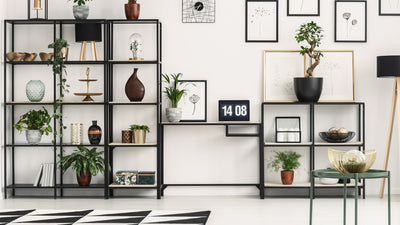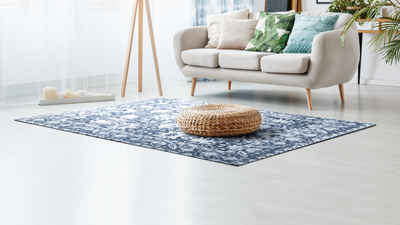How to Mix and Match Throw Pillows For Your Sofa
Throw pillows are one of the easiest ways to inject some comfort and personality into your family room. With just a couple of pillows, your sofa becomes a centrepiece, art gallery and cosy resting place all in one. With endless possibilities on offer, it can be daunting trying to choose the right throw pillows for your living room, which is why we’ve put together this handy guide. Just read through this simple guide and we’ll have you mixing and matching throw pillows in no time.
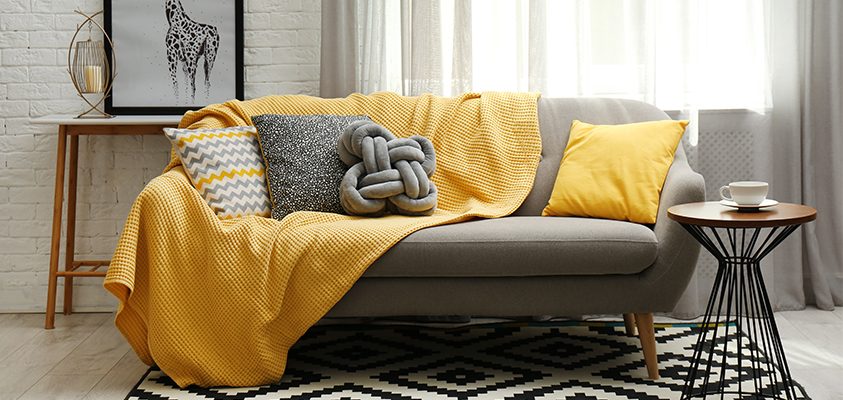
Consider Throw Pillow Type
There are lots of basic pillow types to choose from. We’ve made it simple with this list of the most common pillow shapes and edging types, so you can come prepared to match pillows on your next shopping trip.
Shape:
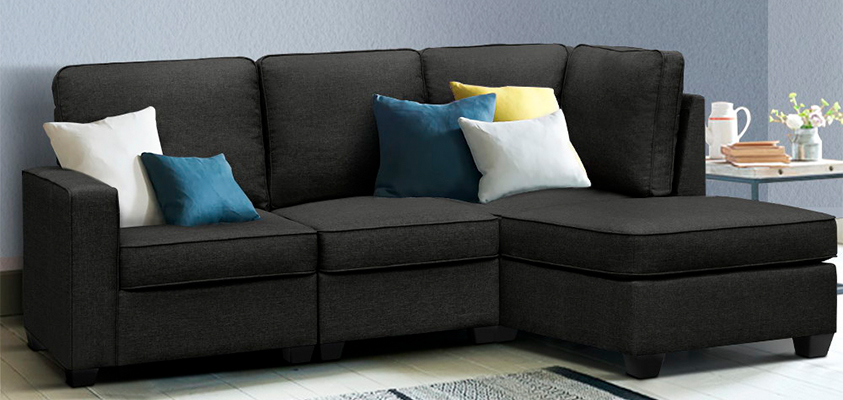
Square
One of the most common shape found amongst throw pillows are square pillows. Square pillows are ideal style for most couches. They are ideal for a wide range of situations, whether you just want some extra padding to lean back and relax, a pillow to boost you up in your seat, or some additional support at the corners of your couch.
Rectangle
The second most popular shape and the most versatile, rectangle cushions can offer great lumbar support and look at home in every room. They are the perfect centre pillow for sofas and beds, and they are the ideal cushion for supporting your head if you enjoy a quick nap on the couch.

Round
Round pillows are a great way to break up straight lines, whether your living room is full of sharp edges or as a contrast to square and rectangular throw pillows. The circular accent creates visual interest especially when mixing and matching, but make sure to use these sparingly.
Box
Instead of tapering off at the edges, box pillows have wide edges that give them more depth and give them a box-like shape. These pillows usually have a depth of 2” (5cm) or more and add dimension to your cushion set-up. Funnily enough, box pillows can be square or round, so you have plenty of variety to choose from.
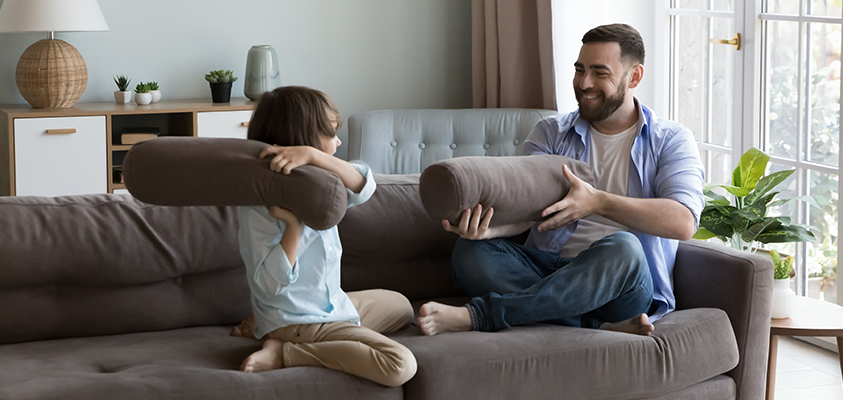
Bolster
Bolster cushions are long, narrow cylinder-shaped cushions that not only add a decorative accent but serve a functional purpose. Bolster cushions can be used to provide support to your neck and back while you sit, placed between your legs at night, or otherwise used to correct your posture. The ideal functional bolster pillow should be roughly the same length as your torso, but if you’re only using it for decoration then you can buy smaller.
Edging:
Knife edge
A simple, clean edge that is created by sewing two pieces of fabric together. No frills, no fuss.
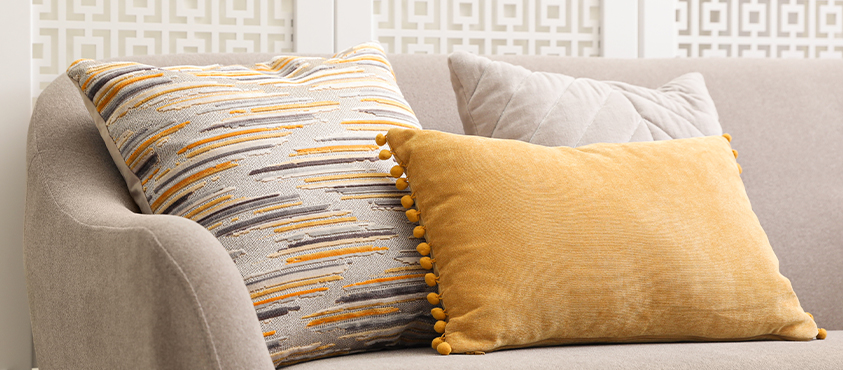
Flanged
A decorative strip of fabric that runs around the edge of the pillow and gives it an elegant flourish. The width of a flange usually ranges between 1-3” or 2.5-8cm.
Welted/corded
A welted/corded pillow has decorative welting or cord attached to a knife edge. If the fabric used in the welt is the same as the pillow fabric, it is referred to as a self-welt.
Scalloped
A flange that is finished in a repeating scallop shell-shaped curve.
Consider Throw Pillow Size
While your ideal pillow size will be up to personal preference, there are some simple rules you can follow to make sure your sofa always looks stylish.
Keep it proportional
Your pillows should look at home on your furniture. Larger pillows on a small chair are not only uncomfortable but they look awkward, while a tiny pillow on a five-seater sectional is going to get lost in the space. If you’re not sure whether your cushions are proportional, use the height and depth of your sofa to determine the maximum height and depth of your pillows.
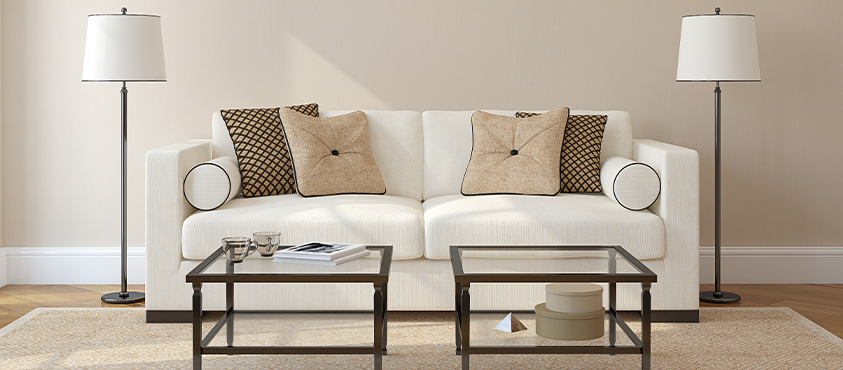
Go smaller as you go inwards
Using cushions of various sizes is a great way to create visual appeal, and the best way to show off your mixing and matching skills is to layer them from largest to smallest going inwards. Your centre cushion should be your smallest to help draw the eye, while the largest at the corners will provide support as you lean into the corners.
Avoid using throw pillows that are all the same size. Mixing and matching pillow sizes creates a more interesting visual style that really highlights your sofa, as well as provides different functions for different seating arrangements.
Consider Your Colour Selection
If you’re a lover of all things colourful, it can be tempting to put out a full rainbow of pillowcases. However, for the most cohesive look, you should try and stick with a single colour palette with matching and complementary colours.
If you’re unsure how many colours to use, stick to three or four at most. Too many colours can feel cluttered, confusing and overbearing. By sticking to four colours at maximum, you’ll be able to show off your creativity without overwhelming your eyes.
The best way to choose your ideal throw pillow colours is to pull from the existing decor. Take the main colour from your rug, wall, artworks or curtains. Most importantly, take cues from the couch your pillows are going on - your accent pillows should match the sofa, whether using complementary or analogous colours.
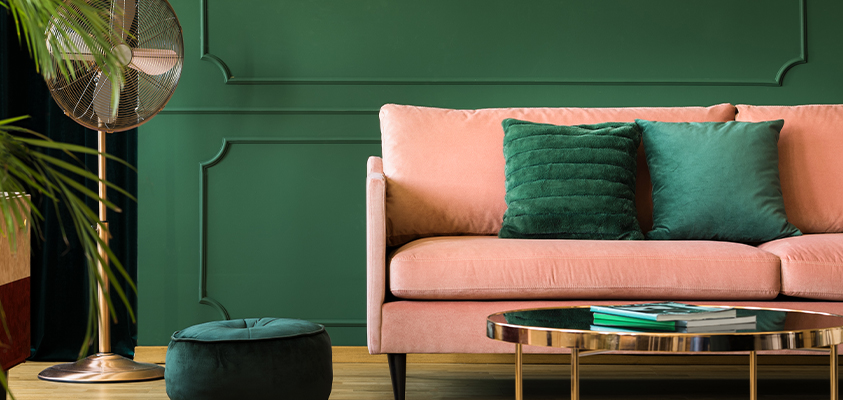
Some great colour combinations to get you started include:
Red, orange and green
Pink, yellow and beige
Purple, orange and grey
Brown, beige and light pink
Choose Your Throw Pillow Patterns
If solid colours seem too boring, you can liven up your couch cushions with a patterned cover. Patterned throw pillows are the perfect accent pieces as they create visual and textural interest, work to emphasise your chosen colour palette, and help breathe life into your living room with little effort. You don't have to be an interior designer to choose patterns that work for your room - from small to large patterns, there's something for everyone. Organic patterns, geometric patterns, polka dots or faux fur - there are so many different patterns to mix and match you'll find it hard to stick with just one pattern. You can mix patterns and solid colours for a simple, balanced layout, or layer patterns and textures for a maximalist plush look that will be an instant crowd-pleaser. If your couch is already patterned, you can use plain cushions with solid colours to soften it.
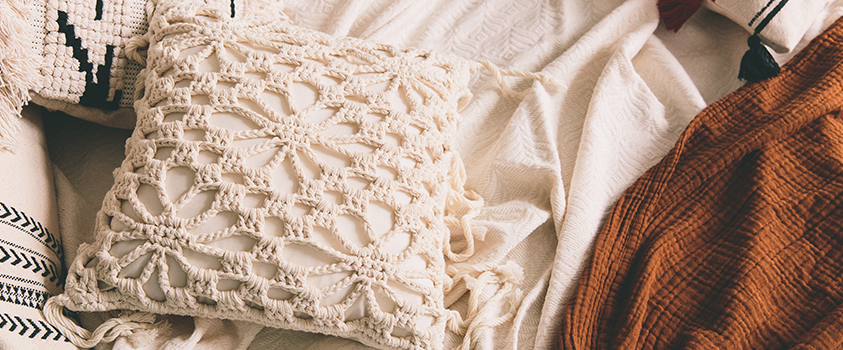
Vary your pattern scale
The best way to use patterns is to layer them similarly to how you would vary pillow sizes. Start with the largest pattern on the outer edge, smaller secondary patterns on a medium-sized or smaller pillow, and a basic third pattern or solid colour for the centre pillow or bolster. Too many patterns on a couch can look messy and cluttered - these simple guidelines help you to use different patterns in a way that is appealing without being overwhelming and create a cohesive feel.
Additional tips:
Accent the main sofa by matching pillows with the sofa
You should match throw pillows to the sofa they're on. This might mean taking the dominant colour or pattern from the sofa and using matching pillows, choosing complementary colours and patterns, or even choosing contrasting colours to really make a statement. At the end of the decoration process, your sofa should still be able to shine on its own instead of being buried.
The rule of three
In interior design, this guideline states that things arranged in odd numbers are more effective, memorable and appealing to the eye, and three tends to be the most effective number. The rule of three is used everywhere from writing to photo composition, and can even be applied when decorating your living room. Three colours, three shapes, three different scales, three textures, three pillows on a sofa - just a few examples of how to successfully apply the rule of three.
Keep the season in mind
Your fresh summer looks might feel a little jarring in the dark, cool hands of winter. Keep seasonal decor by rotating throw cushions for every season. Look outside for inspiration: when the autumn leaves begin to fall, it’s a good time to use browns, reds, oranges and beiges for your interior decor. In the winter, heavier throw blankets and fluffy pillows in blues and dark greens will delight your senses. Spring calls for a beautiful mix of floral prints in bright colours, while summer enjoys a nautical print, light blue, greens and other colours you might see on a warm beach.
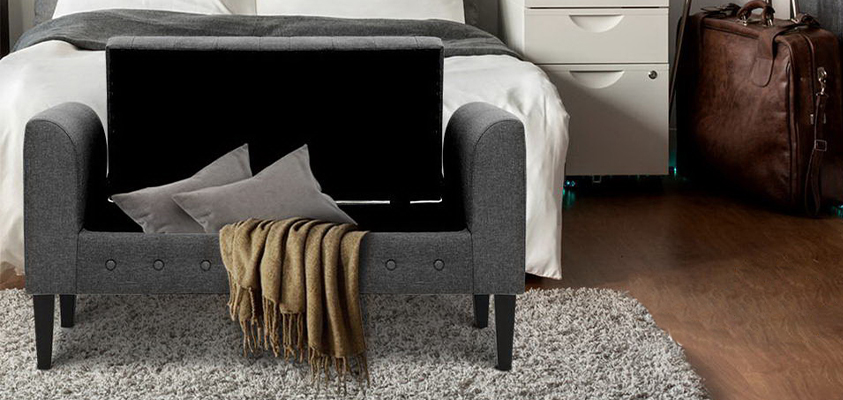
Invest in storage
Worried about the lack of space for all these extra pillows? Don’t be! Now more than ever it’s easy to store your excess pillows and blankets. Use vacuum packs to seal away and store your excess textiles in a fraction of the space, or use one of our multifunctional storage ottomans to put your feet up and store the next season’s pillows. Finally, you can do away with additional pillows altogether and only rotate the cushion covers just like you would on your bed.
Don’t be afraid to experiment
To quote the Dalai Lama: “Learn the rules so you know how to break them.” Once you’ve mastered the basics of sofa accessorising, don’t be afraid to branch out. Your style is unique to you, after all, so you should stick to what makes you feel most at home instead of pushing yourself into someone else’s mould. The perfect pillow combinations are the ones you create yourself!
Artiss has the next best living room additions for you
When it comes to making your living room cosy, we have you covered. From rugs to lamps, we have what you need for that extra softness in your living space. We have your next sofa, sofa bed or armchair waiting for you - just check out our online catalogue or browse our informative buying guide on How to Find the Perfect Sofa.
FAQ
How many pillows should be on a couch?
When it comes to pillows, the more the merrier, right? Well, not always. Too many pillows can overwhelm a sofa, while too few will look sparse and cold. Knowing how to group pillows is just one step of the process.

An easy way to determine the right amount of pillows is with the rule of threes. Two pillows on each side and one center pillow. You might extend this to five throw pillows on a longer or wider couch, always moving from large to small as you go inwards. Odd numbers of pillows arranged symmetrically (two or more at the edges and a single cushion at the centre) is a great solution for most couches. For asymmetrical decoration options, you may choose to use an even or odd number of pillows using mixed textures, patterns and shapes. For smaller armchairs, you may find two pillows is enough, or you might prefer one pillow and a blanket.
The best way to measure how many pillows you need, however, is to consider what’s comfortable. At the end of that day, you’ll be using that couch to sit and relax, so you should focus on comfort over decoration.
Are you supposed to use decorative pillows?
Not all decorative pillows are created equally. Many of them are designed for specific purposes or positions, such as bolster or lumbar pillows that provide support or European pillows that can be used as a backrest. However, many decorative pillow shapes aren't designed for sleep like regular pillows. Does that mean they shouldn’t be used?
Whether you use your throw pillows for everyday use is up to you and your lifestyle. If you have children or pets, you might want to invest in pillows that you can use every day, as well as waterproof and stain-resistant pillow covers and slips. If you live alone or don’t entertain often and just want something to brighten up the room, you might choose pillows that are decorative over functional - just be aware this may make them harder to clean, especially if they don’t come with removable covers.
When your pillows are not in use, you can always store them in a decorative storage ottoman or bench.
Do you need matching throw pillows on a sofa?
Throw pillows are one of the easiest ways to elevate your home, so it’s no wonder they’re used on most sofas. Whether you need them on not depends on your comfort levels and how you like to decorate. Throw pillows provide extra comfort and support depending on the activity, which can make a difference when it comes to your posture and any neck or back pain. They add a lot to your decor with little effort. The question of whether you should have throw pillows in your living room is less “why?” and more “why not?”.
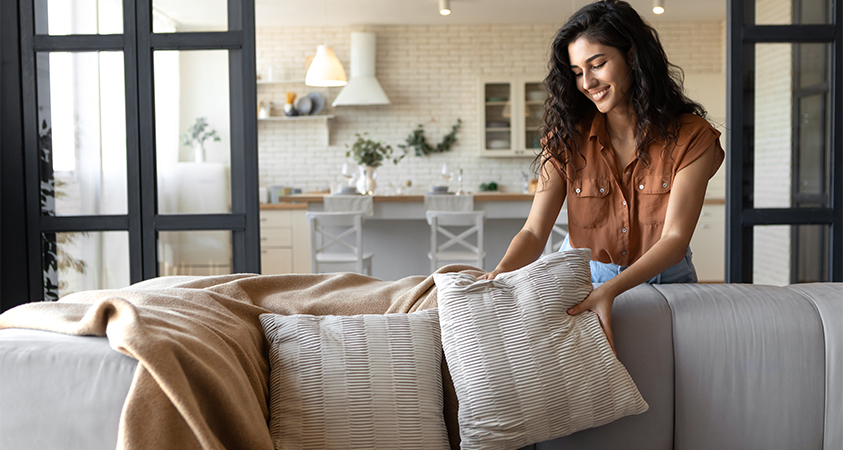
If functionality or price is your concern, you can simply get a cover for your existing pillows or even turn your old pillows into new decorative pieces. You don’t need to go overboard - with just a couple of additions, the right pillow combination can take a sofa from drab to fab.








